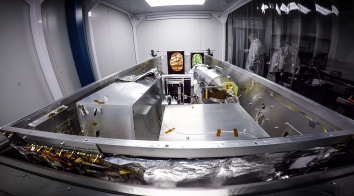University Welcomes New Center for Planetary Systems Habitability
29 May 2020
Scientists from across The University of Texas at Austin are joining forces in the hunt for life on other planets.
Astronomers, geoscientists, chemists, biologists and aerospace engineers have pooled resources to form the UT Center for Planetary Systems Habitability, a cross-campus, interdisciplinary research unit.
“We have been working for several years to achieve a goal like this, and it is incredibly rewarding to see the founding of the center,” said co-director Bill Cochran. A research professor with the university’s McDonald Observatory, Cochran has hunted exoplanets for several decades both via the McDonald Observatory Planet Search and as a Co-Investigator for NASA’s Kepler Space Telescope.
Studying “planetary habitability requires a very broad range of perspectives and skills,” Cochran said. “This new center enables us to bring our diverse talents and skills to address new problems that we could not tackle with a team from a single academic discipline.”
Co-director Sean Gulick, a research professor with the Jackson School of Geosciences, agreed. “Working together gives us the greatest chance to make the breakthrough needed to understand whether life could exist on other planets,” he said.
Researchers attached to the center are investigating how life on Earth has co-evolved with our planet, what makes a world habitable, and whether galactic scale conditions — such as star formation and supernovae — ultimately decide whether a planet can sustain life.
The center is also working with researchers from institutions outside of the university to collaborate on projects and is preparing to launch a visiting scholars program. It will also coordinate cross-campus, interdisciplinary teaching programs focused on planetary habitability.
By bringing researchers from different disciplines together under one (virtual) roof, the center’s founders hope to make the most of planetary data from new instruments like the Habitable Zone Planet Finder on McDonald Observatory’s Hobby-Telescope, as well as from space missions like the Transiting Exoplanet Survey Satellite (TESS) and the forthcoming James Webb Space Telescope.
Interdisciplinary research is the best way to turn those kinds of data into breakthroughs, Gulick said. “You have to get the astronomers who are studying exoplanets, together with the aerospace engineers designing missions, together with the people who are doing the boots on the ground research digging up extremophiles on Earth or finding analog processes.”
The center is a collaboration between the university’s College of Natural Sciences, Jackson School of Geosciences, Cockrell School of Engineering, and the Office of the Vice President for Research (VPR). Alongside each other’s expertise, the center’s scientists have access to campus resources, such as the Visualization Laboratory at the Texas Advanced Computing Center, UT’s Center for Space Research, and telescopes at McDonald Observatory.
The effort was kickstarted in 2018 by an initiative called the Pop-Up Institute for Planetary Habitability led by university’s Vice President for Research, astronomer Dan Jaffe. Start-up funding has been provided by the College of Natural Sciences, the Jackson School of Geosciences, and the office of the VPR.
— END —
Note: For more information, see the center’s website at: https://habitability.utexas.edu
Science Contact:
Dr. Bill Cochran, Senior Research Professor
McDonald Observatory
The University of Texas at Austin
Media Contact:
Rebecca Johnson, Communications Mgr.
McDonald Observatory
The University of Texas at Austin







